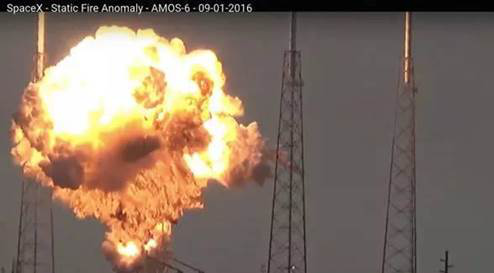Recently, IEEE Transactions on Industrial Electronics, the top journal in the fields of instrumentation, controls and electronics, published the article “Measurement Method for the Velocity of Acoustic Emission Wave in Liquid Nitrogen” by Associate Professor Wei Peng from the School of Instrumentation Science and Opto-electronics Engineering, Beihang University. Wei Peng is the first author as well as the corresponding author. Han Xiaole and Xia Dong, who are graduates of Beihang, are the second and the third authors respectively.
A New Breakthrough in Acoustic Emission Detection at Super-Low Temperature
On October 4, 1957, the Soviet Union inaugurated the Space Age with its launch of the world’s first artificial satellite. Up to now, the benefits we have gained from the space are beyond calculation. However, the space exploration calls for cutting-edge technology, which is challenging for human beings. It is the “breeding ground of revolutionary technology”. No one can afford to make any fault as it is serious and irretrievable.

On September 1, 2006, the Falcon 9 rocket roared toward space only to be lost just after lift off. According to Elon Musk, the possible cause of explosion was the leak of second stage liquid oxygen tank, although no evidence can be found from the data of any sensor in the rocket. On July 2, 2017, the same tragedy happened on the Long March 5 rocket, whose failure was also said to be caused by an oxygen supply problem, though there is no proof from data collected. The two accidents revealed a blind spot of detection-vibration, shock and acoustic emission (AE) signals are undetectable at super-low temperatures.
Since 2010, Wei Peng has focused his attention on this issue. His team believe that the new fiber-optic AE is a promising research topic, which can meet the demand of signal detection of next-generation spacecraft such as rockets, satellites and space shuttles at super-low temperatures.
Wei Peng has been dedicated to the research of fiber-optic AE technology at super-low temperatures. The traditional AE sensors are usually piezoelectric ceramic sensors, which can only function at normal temperature and pressure. The new fiber-optic AE sensor, by contrast, can work for a long time at super-low temperature down to minus 196℃ (or even lower).
Inspired by the Silica in the Nature
The Earth is a treasury, offering infinite inspirations for scientists. Sand, the natural form of silica which remains stable in any harsh environment, attracted Wei Peng’s attention because of its distinctive features and wide distribution. The stability of sand is attributed to its inorganic chemical compound-silicon dioxide. The compound helps sand endure extremely low or high temperatures, greatly improving the stability and plasticity of the materials.
Sand’s ability to adapt to extreme environment offered inspiration for Wei Peng’s team who used optical fiber, the silicon dioxide material with high purity, to make AE sensors. They adopted a super-weak optical to electrical conversion method to develop the fiber-optic AE sensor that could function at super-low temperature.
Based on the previous research of fiber Bragg grating AE sensors, Wei Peng’s team further developed the fiber-optic ring AE sensors and the optical signal demodulating system, which opened the way to the development of high performance AE sensor that could endure super-low temperature. Besides being able to endure super-low temperature, the new AE sensor also performs as well as the traditional commercial one at normal temperature and is compatible to the commercial AE software and algorithms widely used at present. Meanwhile, the new sensor is resistant to high temperature, electromagnetic interference, high pressure, corrosion and moisture. The fiber-optic AE sensor can be applied to many fields including aviation, aerospace, new energy vehicles, liquefied natural gas carriers, cold chain logistics and the partial discharge and superconducting technology of power transformers.

Fiber-optic AE sensors, the sensing system and the AE signal at liquid nitrogen temperature down to -196℃
Wei Peng highlighted the importance of teamwork and persistence in the interview. He believed that good interaction and cooperation between teachers and students could inspire creativity and vitality of the team. Students worked independently under the guidance of the teacher while striving for the same goal at the same time. Wei Peng said that the process of scientific research was like walking solely along the coast of science and only through constant learning, exploring and introspecting could we reap the rewards.

Associate Professor Wei Peng (in the middle) and some team members
New materials, technology and methods are the driving force of revolution. The fiber-optic AE sensor, whose cost is very low, is expected to replace the traditional sensors supplied by American and Germany manufacturers that have occupied 95% of the AE sensor market at home and abroad. It marks a new breakthrough in the core technology of AE sensors.
Reported by Li Peng
Edited by Song Chao
Translated by Xiong Ting

